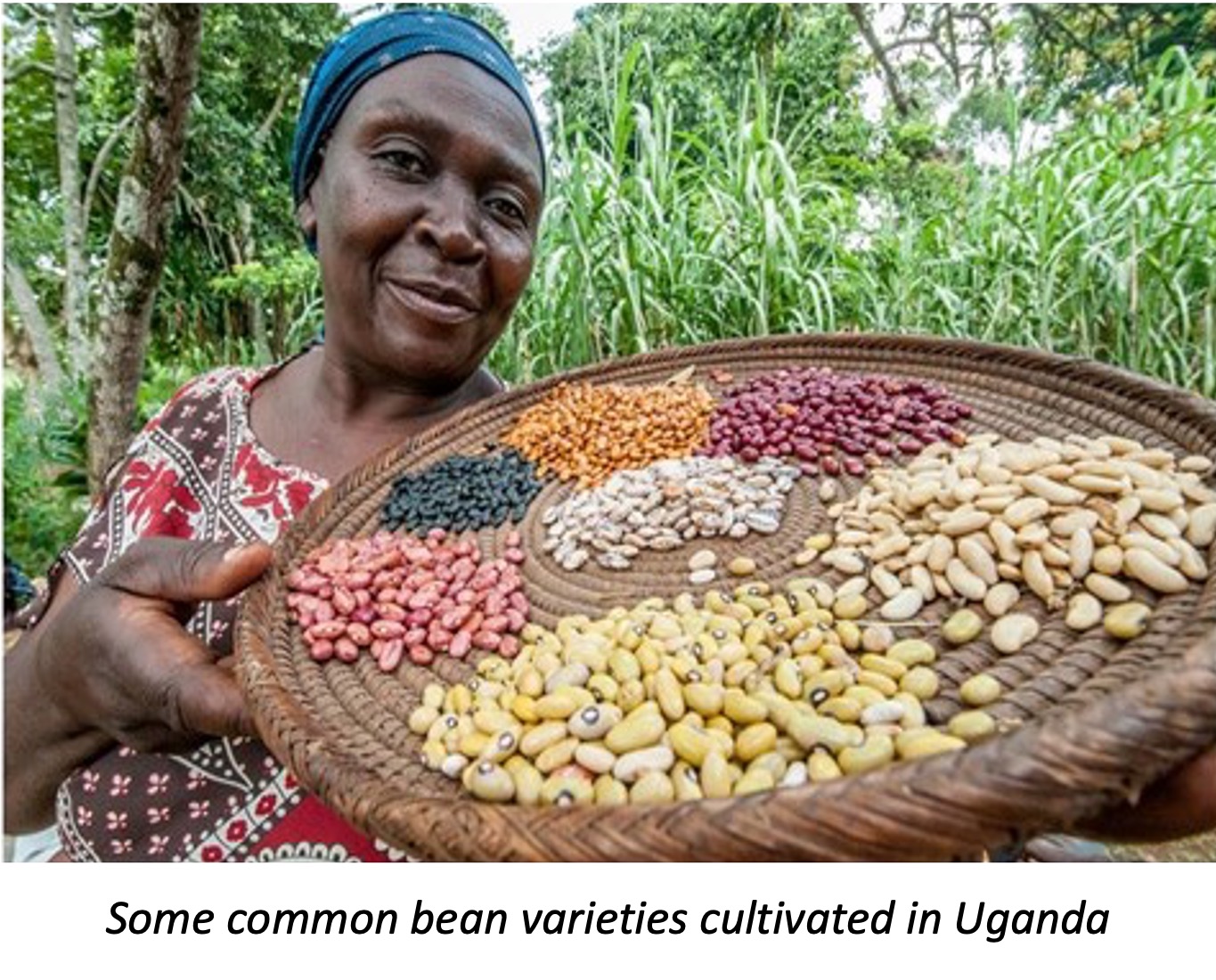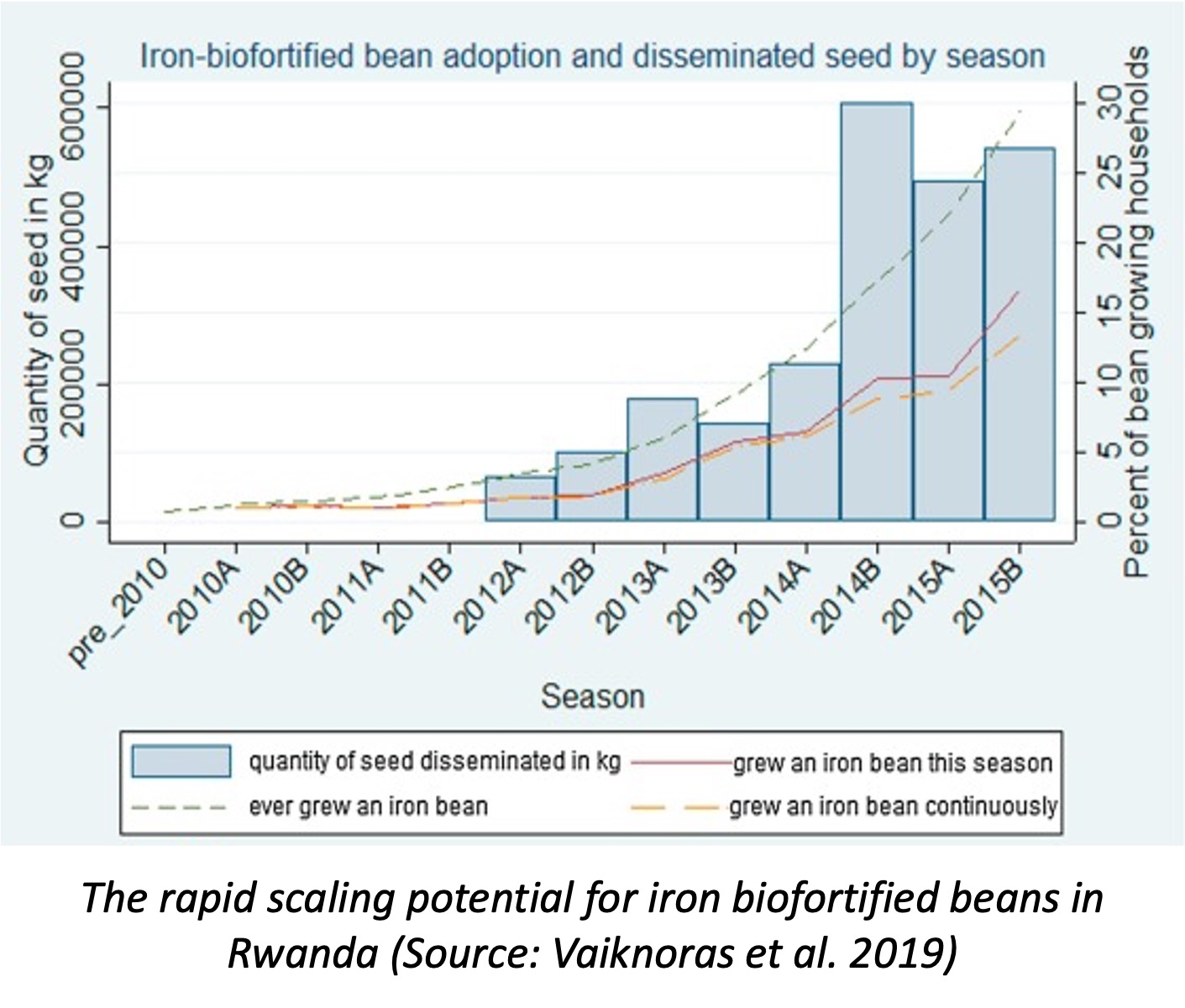Biofortified Beans for Improved Nutrition
Summary
Poor nutrition, including deficiencies of iron and zinc, is a major concern across Sub-Saharan Africa. Iron deficiency is expressed as anemia, impaired motor and cognitive development, elevated risk of maternal death and premature births, and low birthweight. Zinc deficiency results in weakened immune systems, more frequent infection and stunting. Eating biofortified varieties of beans results in higher micro-nutrient uptake and improved health. Biofortification is the process of increasing nutritional value by conventional breeding, good agronomic practices or biotechnological modification. A series of recently released biofortified high-iron bean (HIB) varieties offer an effective technology for improving nutritional security and human health.
About the Solution
Biofortification of bean aims at increasing the concentration of dietary iron and zinc. This approach stands in contrast to supplemental fortification and their associated costs. HIB varieties were developed by crossbreeding elite lines adapted to local growing conditions with American landraces of common beans that are naturally enriched in these micronutrients using materials from the gene bank of the Alliance of Bioversity International and International Center for Tropical Agriculture. Increasing concentrations of iron and zinc in common bean are mutual breeding priorities, but most success was achieved with iron because this genetic trait is more rapidly transferred and better conserved within improved varieties. Further selection of these lines through participatory breeding strategies has resulted in bean varieties with high yield potential, tolerance to drought and diseases, preferred color and size, low flatulence, quicker cooking and favorable culinary characteristics. The greater productivity, nutritional and commercial value of HIB varieties enables small-scale farmers to allocate more resources to this crop, making it a main agricultural enterprise and source of income. At the same time, consuming these varieties results in substantial improvement in household nutrition.
To date, 31 high-yielding varieties of HIB were released in major production zones across Sub-Saharan Africa. These include: Angaza, Nyota, Faida and Metameta for Kenya; NAROBEAN 1, 2, 3, 4C and 5C for Uganda; JESCA, Selian 14 and 15 for Tanzania; MAC 33, RWV 1129 and MOORE88002 for Burundi; MAC 44, HM 21-7, RWR 2154, NAMULENGA and RWV 1129 for DR Congo; MAC 44, RWV 2269, 2887, 2361 and 3316 for Rwanda; NUA 45 and 764, Cherry and Sweet Violet for Zimbabwe; and NUA 35, 45 and 59 for Malawi. Breeding institutions continue to make adaptations to address specific challenges so it can be grown across many agro-ecological zones on the continent. Breeders have also directed efforts to combining iron with tolerance against drought and resistance to diseases such as Bean Yellow Mosaic Virus. Most HIB are used for home consumption, but in some African countries like Kenya, Rwanda and Zimbabwe, a recognized market is developing for high-iron precooked beans, pasta, composite flour and processed foods.
HIB varieties contain about 44 mg more iron per kg than non-biofortified varieties, allowing them to meet about 30% of the average daily iron requirement by consuming 200 grams per day for adults and 100 grams per day for children. The biofortified varieties retain up to 90% of the bioavailable iron after cooking which makes it ideally suited for boosting nutrition. Iron levels may vary as a result of growing conditions and management practices but consistently exceed that of common lines. In addition to greater nutritional value, HIB varieties have various other improved traits such as a high degree of pod-filling, high yields and adaptation to environmental stresses.
HIB varieties are produced using the same management as other varieties. Beans are self-pollinated so farmers can save the best grains from their harvest to maintain a stock of planting materials for the next season, although this practice is discouraged to avoid accumulation of disease and insect pests. Usually, beans are planted on flat land, but sowing on hills or ridges may be practiced in areas with heavy soils, slopes or where the water table is high. Soil preparation for common bean crops includes tillage followed by incorporation of inorganic fertilizers and seed inoculation with rhizobia. Farmers are advised to recycle seeds not more than three times to avoid reduced productivity. Bean is typically grown as either a monocrop or intercropped with maize, sweet potatoes, cotton, coffee, bananas, sunflower and other crops. Seed rates are high in pure stands of bush types, whereas for intercropping arrangements the seed rates are lower. Inter-row distances measure 50 to 75 cm while distance within rows or between hills is 10 cm for single seeds or 20 cm for two seeds per station.
Commercialization
Commercially available
Solution Images
Institutions



